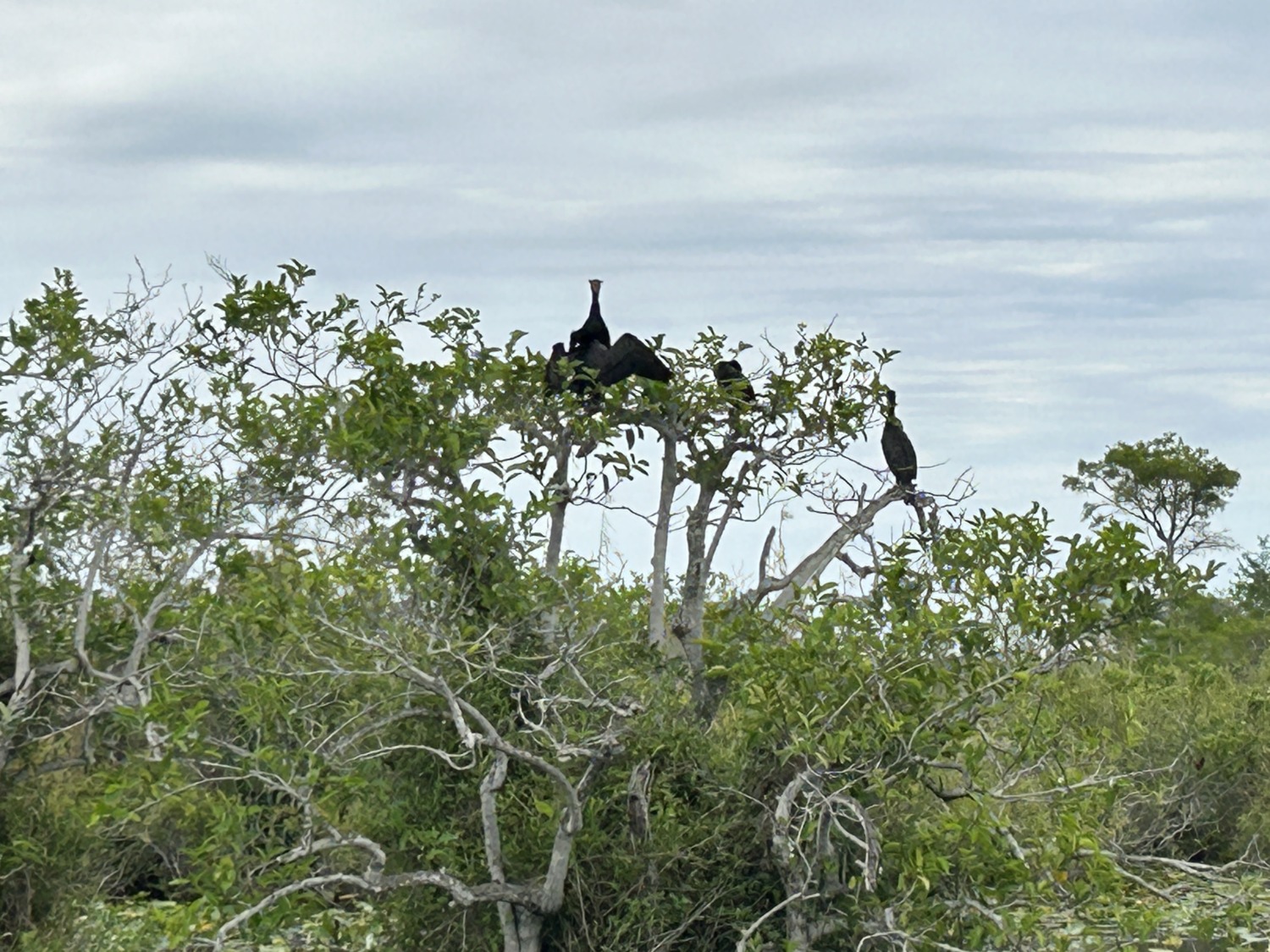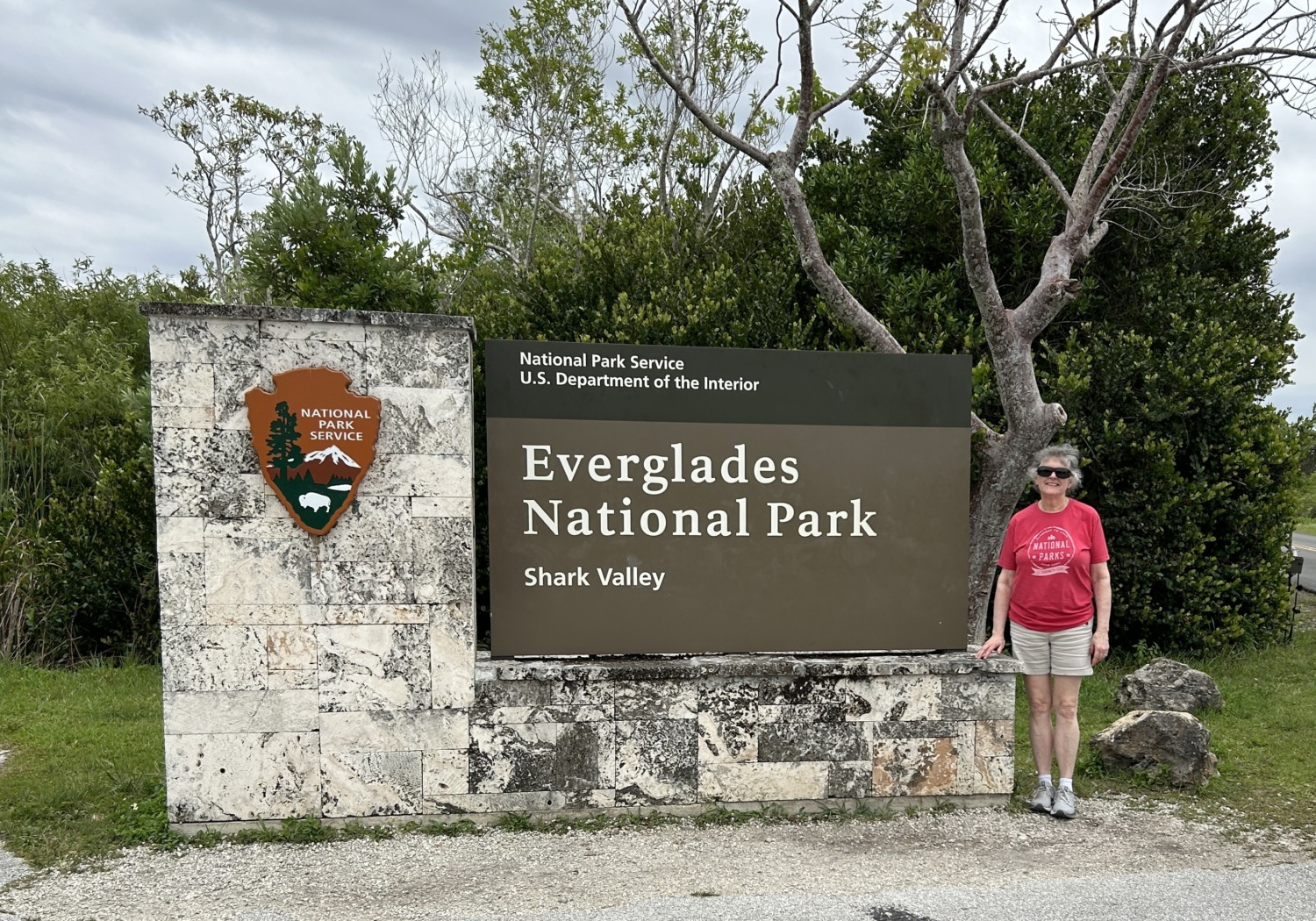Tom and I made a quick trip to Everglades National Park in Florida in between Big Cypress and Biscayne. We had been to Everglades several times and weren’t really interested in seeing it again. But, in our previous visits, I had neglected to get a stamp. So we took advantage of our proximity for me to get my book stamped.
Everglades National Park protects the southern twenty percent of the original Everglades in Florida. The park is the largest tropical wilderness in the United States and the largest wilderness of any kind east of the Mississippi River. An average of one million people visit the park each year. Everglades is the third-largest national park in the contiguous United States after Death Valley and Yellowstone. UNESCO declared the Everglades & Dry Tortugas Biosphere Reserve in 1976 and listed the park as a World Heritage Site in 1979, and the Ramsar Convention included the park on its list of Wetlands of International Importance in 1987. Everglades is one of only three locations in the world to appear on all three lists.
Most national parks preserve unique geographic features; Everglades National Park was the first created to protect a fragile ecosystem. The Everglades are a network of wetlands and forests fed by a river flowing out of Lake Okeechobee, southwest into Florida Bay. The park is the most significant breeding ground for tropical wading birds in North America and contains the largest mangrove ecosystem in the Western Hemisphere. Thirty-six threatened or protected species inhabit the park, including the Florida panther, the American crocodile, and the West Indian manatee. The majority of South Florida’s fresh water, which is stored in the Biscayne Aquifer, is recharged in the park.
Humans have lived for thousands of years in or around the Everglades. Plans arose in 1882 to drain the wetlands and develop the land for agricultural and residential use. As the 20th century progressed, water flow from Lake Okeechobee was increasingly controlled and diverted to enable explosive growth in Miami. The park was established in 1934 to protect the quickly vanishing Everglades. When it was dedicated in 1947, major canal-building projects were initiated across South Florida. The ecosystems in Everglades National Park have suffered significantly from this human activity.
Tom and I intended to go to the Alligator Alley Visitors Center along US 41. When we got there, however, the parking lot was full and there was a long line waiting to get in. We decided to go to the Ernest Coe Visitor Center in Homestead instead. I didn’t know how difficult it would be to get there.
When we are driving a car, I like to guide Tom along roads that I think will be less congested. Google maps suggested roads that skirted Homestead to the north and west. I did not know, however, that these were agricultural roads with lots of farm machinery. In addition, there had been a heavy rain in the area the day before and one part of the road was flooded. We watched a truck coming toward us drive into the field to avoid the water-filled roadway. Tom did the same thing once the truck passed but still had to drive through a scary amount of water. We were glad to get on the park road south of Homestead.

Everglades National Park is the only park site we visited that had an admission fee. The current cost is $35 per vehicle, but Tom pulled out his Senior Pass and we got in free. Ernest Coe Visitors Center was not as busy as Alligator Alley and we didn’t have any problem finding a parking spot. We went in the Visitors Center and I got my stamp, then we decided to take a nearby hike. After that long and treacherous drive we weren’t anxious to get back in the car right away.

The hike we chose had two parts. We started with the Anhinga trail along a boardwalk through a wetland and ended with the Gumbo Limbo trail. The Anhinga trail had a several anhinga at the start of the trail, which was helpful and scenic. I had never heard of a gumbo limbo tree, but they are very common in south Florida. Now I can recognize them anywhere.
Having achieved our objective of a stamp and a walk, we headed back to our hotel in Homestead. Everglades National Park is a beautiful, wild park and everyone should visit there once.


